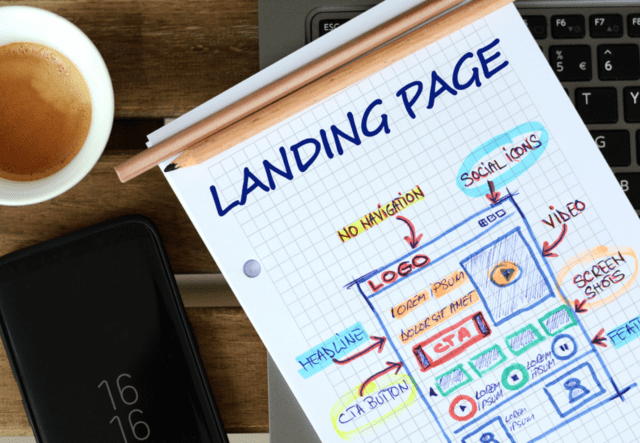Conventional marketing wisdom says that you should remove the main menu from your landing pages to increase your conversion rate. While this is great advice applicable to a large number of landing pages, it’s not a requirement across the board.
Most landing pages do better without menus. For example, when you’re running a PPC ad campaign on Facebook that goes directly to a sales page, having a menu can cause people to wander and you’ll lose the sale. However, when your landing page is designed to capture leads, having a menu allows people to verify for themselves that you’re legit.
You’ve probably heard all the arguments for removing your main menu from your landing pages, so here are 5 reasons to leave those menus intact.
1. Your Visitors Might Need More Information
Contents [show]
Landing pages are primarily used in conjunction with marketing campaigns using PPC ads, and if you’re not well known, your visitors might instinctively want to view your “about us” page. If your main menu is missing, your visitors will try to navigate to your home page by typing your domain name into their browser’s address bar. This is the main reason people use video next to their lead capture forms. For instance, landlords visiting Green Residential’s Houston lead capture form don’t need to navigate away to find out more information.
Although it will take visitors away from your landing page, if they need more information, wandering around your site could be helpful. They can always navigate back to your landing page using the back button. However, your visitors will run into a problem when your landing page is hosted on a separate domain name where there is no “about us” information.
If you’re using a special domain name to host your landing pages, that’s okay, but consider adding a small main menu for those who want more information on your company before making a purchase or signing up for your email list.
2. Menus can be Customized for your Landing Page Visitors
You don’t actually need to use your standard navigation menu on your landing pages. You can create a customized menu that keeps your landing page content in front of your visitors. For example, you can use JQuery to make all additional content pop up in a shadow box right on the landing page so your visitors never navigate away from the page.
The key to making a customized menu work is to be selective about your link titles as well as minimizing the content so visitors don’t get too distracted.
Visitors know when they’re “being sold” and when there is no main navigation menu, many visitors will feel uncomfortable.
Although the statistics support a higher conversion rate when no menu is present, it really depends on what kind of landing page you’ve got. If you’re an unknown brand trying to make a sale straight from a PPC ad, a menu can make visitors wander and get lost. However, if you’re trying to educate people and capture their email address, a navigation menu can support your efforts by validating your involvement in your cause.
Worried about killing your conversion rate with a menu? The good news is there’s a happy middle.
It’s a little unconventional, but you can put information in your navigation menu without making the links clickable. For example, you can use a mega menu that fills the width of the browser to display information when the mouse hovers over a menu item. This way, your menu won’t actually take your visitors off the page and you can convey small amounts of information to visitors who need more information before converting.
5. You can Make Your Links go to Anchors on the Same Page
If you’re going to keep a main navigation menu on your landing pages, have each link take visitors to anchors on the same page. Just make sure to add navigation that takes users back to the top of the page.
Split test your page designs to see what works best
Everyone has an opinion about landing pages and navigation menus. At the end of the day, the only way for you to know what works best is to split test all possibilities.
While there are pros and cons for using a main menu on a landing page, don’t take anyone’s word. Instead, run a split test on each variety of landing page you create – one with a menu and one without. Market to the same demographic and see what works best.


